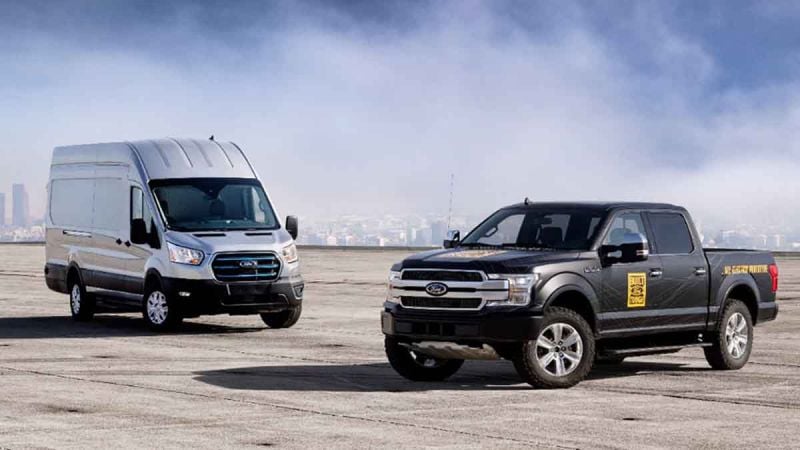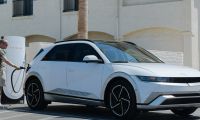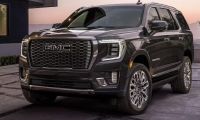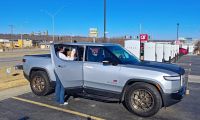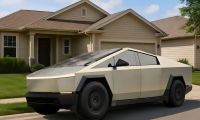Today, Ford launched the E-Transit for the 2022 model year. The E-Transit is an all-electric version of the world’s best-selling cargo van (Ford Transit). It may seem like not a big deal, especially considering all the amazing product launches Ford has done this year (2021 F-150 and 2021 Bronco) but a closer look shows why f-150 fans should be paying attention.
“Ford is North America and Europe’s commercial truck and van leader, so the transition of fleet vehicles to zero emissions, especially for the fast-growing last-mile delivery segment, is critical to achieve our carbon neutrality goal by 2050,” said Jim Farley, Ford president and CEO. “Ford is ready to lead the charge, starting with the all-electric Transit and all-electric F-150 on the way. This is good for the planet and a huge advantage for customers to help lower their operating costs and provide connected fleet management technologies that will help their businesses.”
Reread that quote from Farley and read between the lines. Ford’s electrification will likely be Farley’s legacy at Ford. And sure you can gripe or push back or say how uninterested you are in EVs, but it’s happening. And it seems Ford has an ambitious goal too with a carbon neutral date of 2050.
The fact that they’ve already been so daring and bold to put an EV on something with a Mustang logo (the Mach-E) and are creating an all-electric F-150, their number one selling nameplate. It’s bold and shows Ford’s commitment to electrification.
So, looking at what the E-Transit will have, we can extrapolate some details that we will likely see on the 2022 all-electric F-150 too. Let’s take a closer look at the E-Transit and see what might translate down to the F-150.
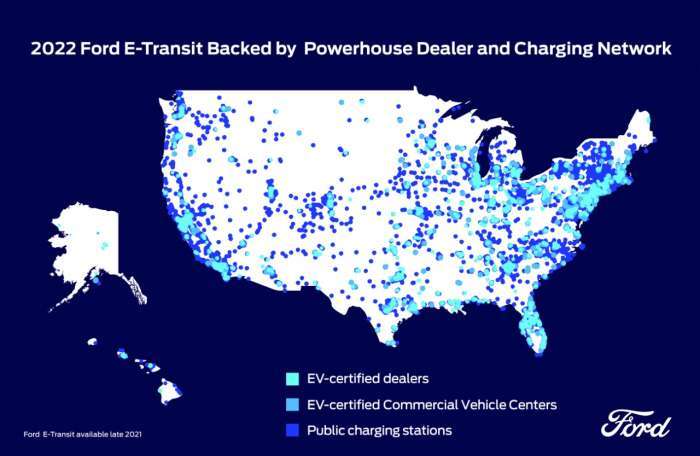
Charging Network
Imagine the year 2050, where instead of gas stations there are recharging stations. If you’re running low on battery power, you pull in, hook up to a charging station, maybe grab a coffee. For about 10 minutes, you can super charge and get the mileage you need for the day.
That’s sort of the idea behind the E-Transit, according to Ford. E-Transit is a smart workhorse for U.S. cities designed with insight from 30 million miles of customer telematics data to deliver the right amount of range based on fleet needs – at a price that makes it easy to switch to electric. With a usable battery capacity of 67 kilowatt-hours, E-Transit will deliver an estimated range of 126 miles in the low-roof cargo van variant. T
“This makes E-Transit ideal for commercial customers who know their drive routes and often work in urban environments,” said Ted Cannis, Ford North America general manager of commercial business. “Affordability is key, and our customers buy only what they need to get the job done. E-Transit provides ample range at a price that makes the transition to electric easy. And Ford is just getting started.”
When the 2022 electric F-150 comes out, range anxiety will be a concern. Plus, there’s the unanswered question of how far can the EV F-150 go? And what happens if you’re towing with it? That will surely eat into the battery life and the range.
Ford will offer a variety of charging solutions to fit fleet and driver needs, whether at home, at a place of business or on the road. E-Transit comes with access to North America’s largest public charging network – providing drivers with seamless public payment capability and providing fleet managers with central account and billing management.
See the chart below for locations of all those. That might ease the concern of range anxiety a little as it relates to the F-150.
E-Transit features both AC and DC fast charging, coming standard with a Ford Mobile Charger that can plug into a normal 120-volt outlet for slow and steady charging or into a 240-volt outlet for faster charging. Those seeking the fastest home charging solution can purchase the Ford Connected Charge Station, which can fully charge E-Transit in eight hours. It’s likely the electric F-150 will have a similar set up.
On a 115-plus-kilowatt DC fast charger, E-Transit cargo van low-roof models can achieve approximately 30 miles of range in 10 minutes and approximately 45 miles of range in 15 minutes6. When plugged into a 240-volt outlet, E-Transit cargo van low-roof models achieve approximately 10 miles per charging hour using the Ford Mobile Charger. Employing a Ford Connected Charge Station brings the number up to approximately 15 miles per charging hour.
We don’t know if this is a true apples to apples comparison for the 22 F-150, but it’s probably in the ballpark.
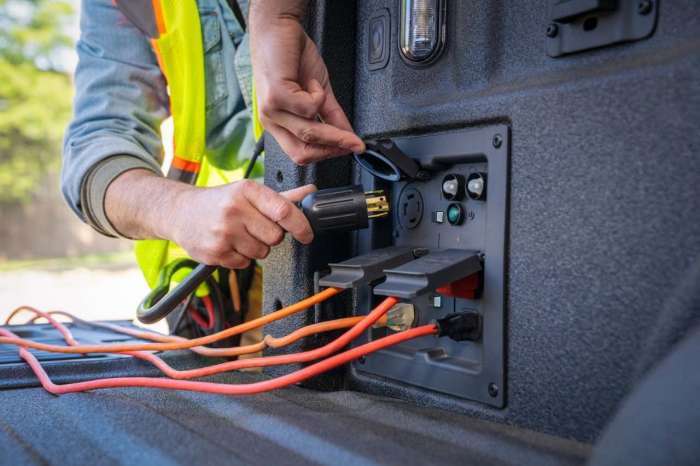
More power, connectivity on the go
Like the hybrid PowerBoost 2021 Ford F-150, E-Transit features optional Pro Power Onboard, which provides up to 2.4 kilowatts of power for North American customers to transform the vehicle into a mobile generator that powers tools and equipment on job sites and on the go. That’s enough capability to power everything from belt sanders to circular saws.
I would expect the 2022 electric F-150 to have some iteration of this feature too. It only makes sense and honestly it’s a clever and useful idea.
Connectivity is coming to many Ford vehicles, including the F-150. I wrote about hands-free driving technology coming, along with a completely electronic-only manual plus vast improvements to Sync4 and over-the-air updates all coming to the next generation F-150.
Likewise, the E-Transit will have many of these same features that likely gives us a clear look into the future.
When activated, the standard 4G LTE modem unlocks available data subscriptions and delivers seamless connectivity to help commercial vehicle customers manage and optimize fleet efficiency. A range of dedicated electric vehicle services are available through Ford Commercial Solutions, including electric vehicle data enhancements from Ford Telematics and Ford Data Services.
Remote services like vehicle pre-conditioning – which optimizes cabin temperatures while E-Transit is plugged in to optimize battery efficiency – are also available, as well as charging reports that enable fleet managers to reimburse drivers who bring their vans home in the evening.
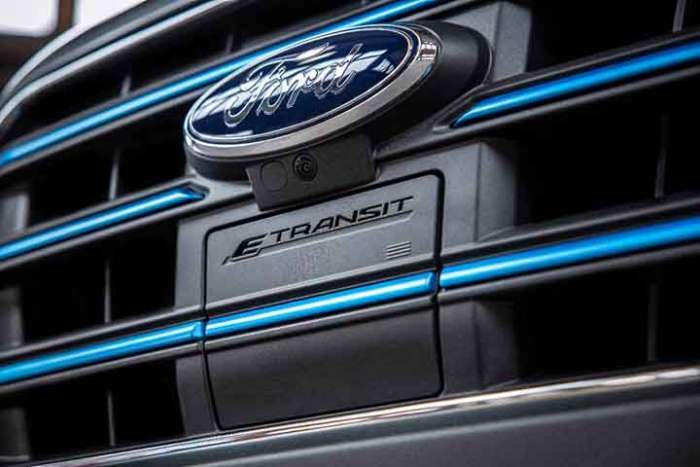
E-Transit also brings SYNC 4 communications and entertainment technology9 to commercial vehicles, featuring a standard 12-inch touch screen that’s easy to use, plus enhanced voice recognition and cloud-enhanced navigation. With SYNC over-the-air updates, E-Transit software and SYNC features will stay at the forefront of performance.
On the road with navigation enabled, fleet operators can benefit from new Ford Co-Pilot360 technology such as available Intelligent Adaptive Cruise Control with Speed Sign Recognition and Intelligent Speed Assist, which together identify speed limits and automatically change the vehicle speed accordingly.
E-Transit also features additional standard Ford Co-Pilot360 technologies designed to help fleet customers reduce driver-based insurance claims, including Lane-Keeping System and Pre-Collision Assist with Automatic Emergency Braking. Available features include Blind Spot Information System with Blind Spot Assist, a 360-degree camera and Reverse Brake Assist. These features can help maintain fleet driving standards and help improve driver confidence.
Clearly loaded with technology, the E-Transit is primed to have mass appeal for business owners. And likewise, you can expect the same thing from the 14th-generation F-150 and the 2022 electric F-150.
The above video sums it up perfectly. A new dawn rises on an electric horizon. You can either embrace it or reject. But with the E-transit, the Mach-E and the upcoming electric F-150, Ford is moving forward. I personally think it’s exciting and good for the company. What say you? Leave me your thoughts below.
Jimmy Dinsmore has been an automotive journalist for more than a decade and been a writer since the high school. His Driver’s Side column features new car reviews and runs in several newspapers throughout the country. He is also co-author of the book “Mustang by Design” and “Ford Trucks: A Unique Look at the Technical History of America’s Most Popular Truck”. Also, Jimmy works in the social media marketing world for a Canadian automotive training aid manufacturing company. Follow Jimmy on Facebook, Twitter, at his special Ford F-150 coverage on Twitter and LinkedIn. You can read the most of Jimmy's stories by searching Torque News Ford for daily Ford vehicle report.



